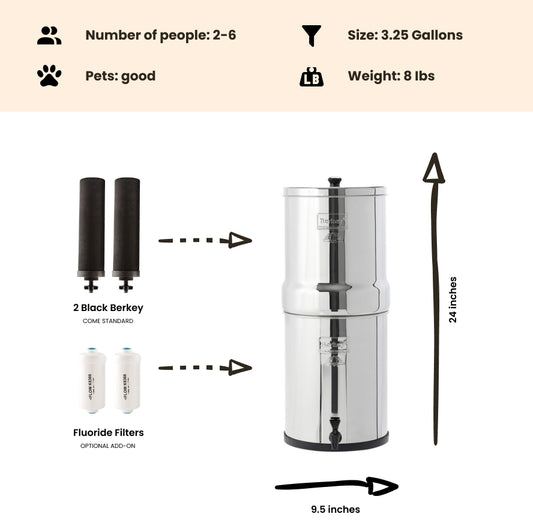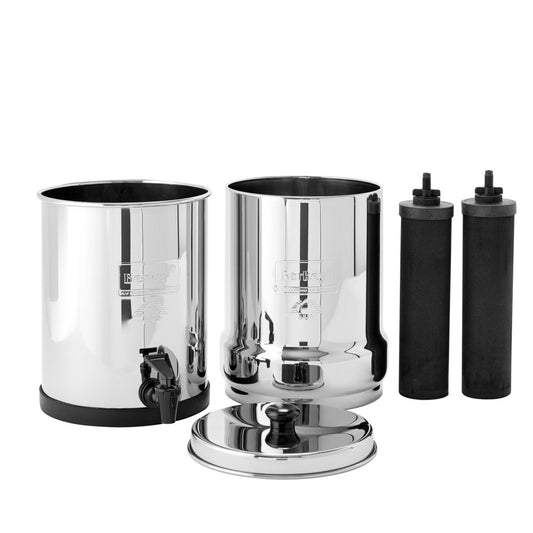
5300 US Water Systems Found to be Tainted by Lead
By Dan DeBaunShare
According to a recent CNN report, 5,300 US water systems are tainted with lead, exposing approximately 18 million Americans to dangerously high levels of lead. This report, which was prepared by the Natural Resources Defense Council (NRDC), states the US Environmental Protection Agency (EPA) is aware of the problem, but has not taken much action to prevent the danger this poses to consumers.
"Imagine a cop sitting, watching people run stop signs, and speed at 90 miles per hour in small communities and still doing absolutely nothing about it -- knowing the people who are violating the law. And doing nothing. That's unfortunately what we have now," said Erik Olson, health program director at Natural Resources Defense Council, which analyzed the EPA's data for its report.In this scenario, the 'cop' is the states where there are concerns — who have a duty to ensure that the water they provide residents is safe to drink — together with the EPA, the water watchdog agency, who is supposed to act when water standards are not met. Yet in many instances the EPA has been failing to step in. The EPA implemented a lead and copper regulation to protect American's from the country's aging water infrastructure. Yet, in many cases the safeguards put in place are not being met. According to the CNN report, more than 5,300 US water systems do not comply with the safety measures set out in the ruling, putting residents at the same risk as those living in Flint, Michigan. The affected water utilities are guilty of several violations including: • Failure to adequately test for lead • Failure to adequately treat water to prevent lead contamination • Failure to inform residents of lead contamination According to the report, in 817 instances, states stepped in and took action, while the EPA only intervened in just 88 instances. To make matters worse, the report has revealed that in many cases the EPA is aware that many water utilities buck the system by using dubious testing methods to avoid detecting high concentrations of lead, such as getting residents to flush their pipes before testing. Yet they have not stepped in to take action, choosing rather to turn a blind eye, even though this puts residents at risk of lead poisoning. Consequently, the number of water systems — which could number hundreds, or even thousands — and ultimately the number of Americans affected, could be much, much higher. What is even more concerning is that the public is blissfully unaware of the hazards they face. These violations are not restricted to small towns like Flint; they effect large cities servicing thousands of residents. Philadelphia is a key example. Of the approximately 50,000 residences served by lead water pipes, the city tested a mere 40 homes for lead, mostly from homes considered low risk. Seven of the homes tested had high levels of lead. The residents in the remaining 49,960 homes that were not tested have no idea whether they are being exposed to high levels of lead or not. The NRDC report implies that these results are skewed and thus flawed. Yanna Lambrinidou, a water researcher at Virgina Tech who has been monitoring the situation, says the EPA should immediately alert Philadelphia residents that the test results are unreliable, so that people can take precautions to ensure they are not exposed to high levels of lead. In the meantime, the EPA and the state of Pennsylvania are throwing the ball around with the EPA saying that the state is responsible for enforcing the lead rule in Philadelphia, while the Philadelphia Mayor's office saying that it plans to adhere to the EPA's new guidelines the next time it tests for lead, which will be in 2017. In the meantime, there is an entire city — 50,000 homes — that are not protected. Philadelphia, like Flint, is just the tip of the iceberg. Other cities are affected too. Approximately 97% of violations related to lead that the EPA has taken note of are for failure to adequately monitor lead levels in drinking water.
"I think that the basic problem is that the federal EPA and the water officials, and a lot of communities across the country are very tight. And the EPA has been very reluctant to take enforcement action against them in most cases. They're friends, they hang out with each other, they ask for each other's advice, and you get close after a while," Olson said.While lead is not safe at any level, the EPA standard for drinking water was set at 15 parts per billion (ppb) in 1990. When lead levels exceed this standard, regulators are supposed to take action, forcing water utilities to take measures to correct and address the problem to ensure water is safe to drink. While Flint has made the headlines recently due to the extremely high levels of lead recorded (over 10,000 ppb in some cases), the NRDC has revealed that a water system in Utah serving 1,675 residents had lead levels of 6,000 ppb. In addition, "there are eight water systems in seven different states and territories with lead levels above 1,000 ppb; and 25 water systems with lead levels above 200 ppb." Further Info: For more information, including maps showing which communities are affected, read the full CNN report. How to test for lead in your home water supply
-
Regular price $234.00 USDRegular priceUnit price / per
-
Regular price $327.00 USDRegular priceUnit price / per
-
Regular price From $367.00 USDRegular priceUnit price / per
-
Regular price From $408.00 USDRegular priceUnit price / per
-

 Sold outRegular price From $451.00 USDRegular priceUnit price / per
Sold outRegular price From $451.00 USDRegular priceUnit price / per -
Regular price From $478.00 USDRegular priceUnit price / per
-
Regular price $332.50 USDRegular priceUnit price / per
$350.00 USDSale price $332.50 USDSale

Dan DeBaun
Dan DeBaun is the owner and operator of Big Berkey Water Filters. Prior to Berkey, Dan was an asset manager for a major telecommunications company. He graduated from Rutgers with an undergraduate degree in industrial engineering, followed by an MBA in finance from Rutgers as well. Dan enjoys biohacking, exercising, meditation, beach life, and spending time with family and friends.
~ The Owner of Big Berkey Water Filters
















